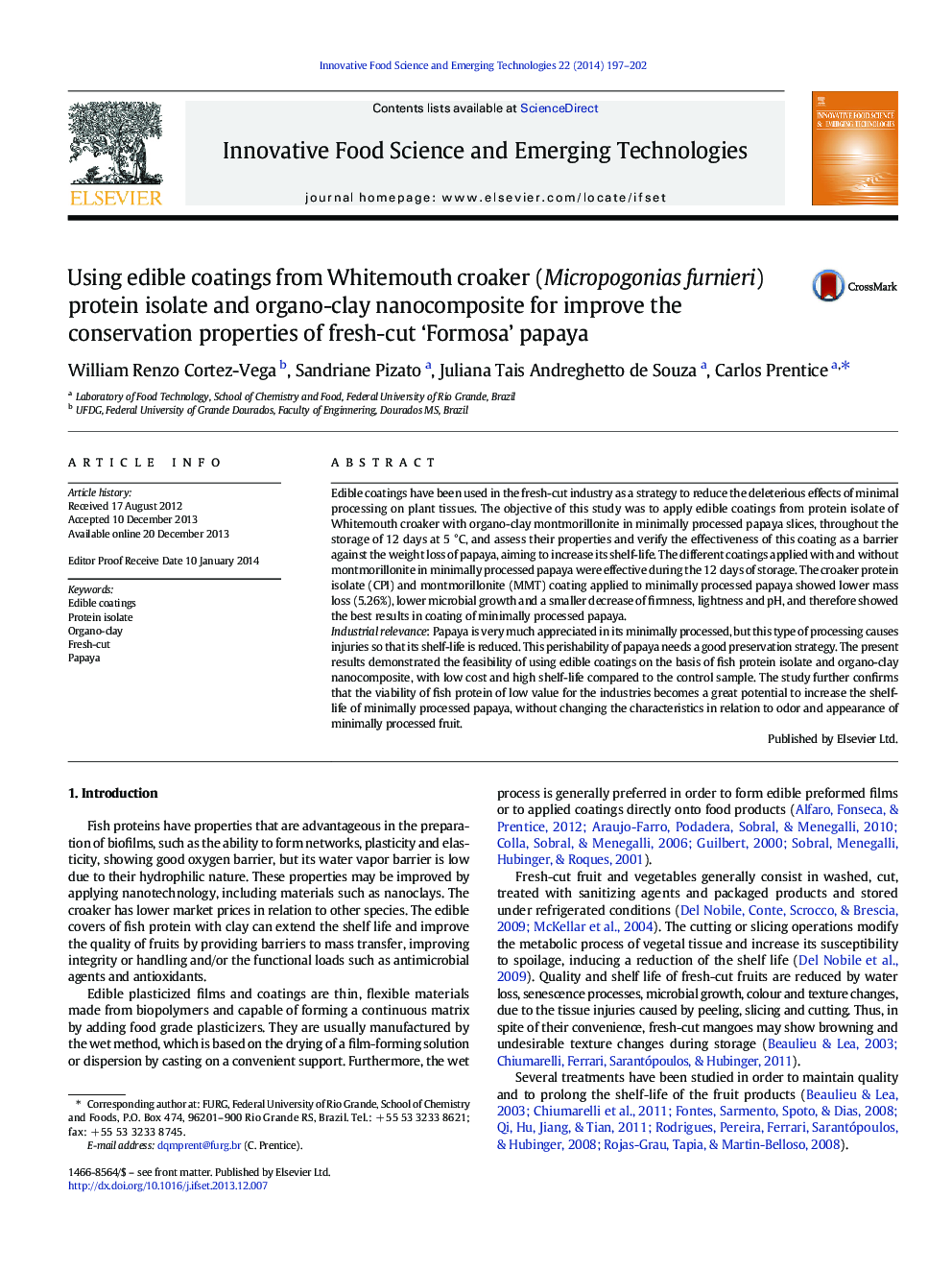| کد مقاله | کد نشریه | سال انتشار | مقاله انگلیسی | نسخه تمام متن |
|---|---|---|---|---|
| 2086637 | 1545544 | 2014 | 6 صفحه PDF | دانلود رایگان |

• Use of coating with fish protein and nanoclays was effective to preserve the quality of the product.
• Coatings of protein were effective in reducing weight loss, color and microorganisms control.
• The presence of coating produced low weight loss and better firmness to samples of papaya.
• Coating with fish protein isolate and montmorillonite showed the best results to protect papaya.
Edible coatings have been used in the fresh-cut industry as a strategy to reduce the deleterious effects of minimal processing on plant tissues. The objective of this study was to apply edible coatings from protein isolate of Whitemouth croaker with organo-clay montmorillonite in minimally processed papaya slices, throughout the storage of 12 days at 5 °C, and assess their properties and verify the effectiveness of this coating as a barrier against the weight loss of papaya, aiming to increase its shelf-life. The different coatings applied with and without montmorillonite in minimally processed papaya were effective during the 12 days of storage. The croaker protein isolate (CPI) and montmorillonite (MMT) coating applied to minimally processed papaya showed lower mass loss (5.26%), lower microbial growth and a smaller decrease of firmness, lightness and pH, and therefore showed the best results in coating of minimally processed papaya.Industrial relevance: Papaya is very much appreciated in its minimally processed, but this type of processing causes injuries so that its shelf-life is reduced. This perishability of papaya needs a good preservation strategy. The present results demonstrated the feasibility of using edible coatings on the basis of fish protein isolate and organo-clay nanocomposite, with low cost and high shelf-life compared to the control sample. The study further confirms that the viability of fish protein of low value for the industries becomes a great potential to increase the shelf-life of minimally processed papaya, without changing the characteristics in relation to odor and appearance of minimally processed fruit.
Journal: Innovative Food Science & Emerging Technologies - Volume 22, April 2014, Pages 197–202